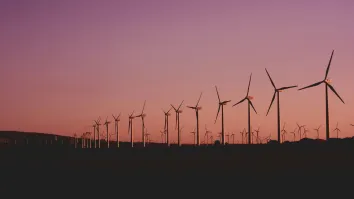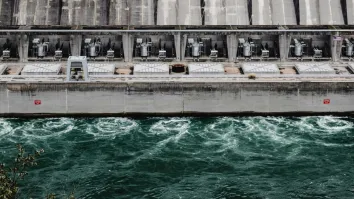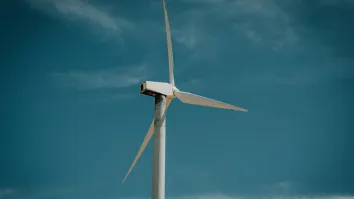
Energy opportunities in Southeast Asia explored in 2023 Asian Power Forum - Bangkok
The event is the first Asian Power Forum to be held in person after years of virtual events.
Many industry leaders are focused on the progress of sustainable energy in Asia, which has seen significant advancements in recent years. The region's energy leaders have set an example for others to follow, making Asia a key player in sustainable power development.
Asian Power brought together key stakeholders in the region at the Bangkok leg of the 2023 Asian Power Forum, held on 5 April at the JW Marriott Bangkok. This is the first forum held in Bangkok after years of holding events virtually. During the event, industry professionals got to connect with experts in the sector through presentations and a panel discussion.
A realistic view of hydrogen opportunities in Southeast Asia
For the first speaking session of the event, Dieter Billen, Partner for Energy, Sustainability & Infrastructure - Southeast Asia at Roland Berger, offered his perspective on green hydrogen opportunities. Particularly, he talked about the point of view of power producers in Southeast Asia, the huge interest in green hydrogen, and the opportunities within Southeast Asia.
"We expect the global market for green hydrogen to rise very rapidly, especially in Europe and North America – with strong government support like the Inflation Reduction Act in the US. Although only a fraction of the announced projects will materialize, this will still represent strong growth in green hydrogen capacity", Billen said. However, the growth in Southeast Asia is lagging behind, given limited to no support in most countries in the region.
Billen also stressed the need to assess hydrogen opportunities by project archetype: small-scale green hydrogen (less than 10 MW), on-site industrial green hydrogen production (less than 250 MW), and centralised large-scale green hydrogen gigaprojects for exports (more than 250 MW). Although there are a number of announcements for large-scale export projects, Billen expects the majority of projects in Southeast Asia by 2030 to be small-scale projects or on-site industrial production projects, given the high cost of transport at this stage.
With these challenges in Southeast Asia, Billen advised starting with small-scale hydrogen projects and ensuring nearby demand before exploring other large-scale opportunities.
Outside hydrogen, Billen noted the strong opportunities in solar and geothermal energy that a lot of Southeast Asian markets still offer, as well as wind power in certain geographies in the region.
Ultimately, renewable energy is expected to have the biggest impact on Southeast Asia’s decarbonisation, but this will need investments, not just in terms of generation, but also in the modernisation of grids and storage capacity.
“The most impactful way to decarbonize in Southeast Asia is increasing the share of renewables,” Billen said.
Looking ahead at the Asian energy sector’s future
The second speaking session was held by Dr Florian-Patrice Nagel, First Senior Vice President and Head of Corporate Strategy at B.GRIMM Power, who gave a power producer's perspective on how the world has been evolving and what has been driving the energy sector given this shift.
Nagel explained that with the reduction of greenhouse gas emissions in the global economy becoming imperative, renewables are seeing exponential growth in Southeast Asia. In addition to this, he noted that installed capacity is showing a tremendous growth trajectory, but it does not realistically get close to the target as a multiple of at least two or three times more is needed to meet the required production.
"I personally believe that this is only possible if the private sector will invest and puts up all this money. To be able to do this, we need sector reforms to enable more business cases and attract more private investments into the energy sector of this region. For example, unconditional third-party grid access and a supply-demand driven energy prices would make energy storage viable as a business for the private sector," Nagel said. He then suggested digitalisation to enable real-time control of grids using AI and machine learning, amongst other things. This is imperative to manage grids becoming ever so complex.
Nagel put forward B. Grimm's GreenLeap Strategy, which is rooted in the insight that the reduction of greenhouse gas emissions of the global economy is the S-Curve for decades to come. The said strategy aims to build resilience to geopolitical events and public sector decision-making, especially regarding the main cost driver of B.GRIMM Power—the gas pool price.
The GreenLeap Strategy is focused on increasing and improving margins, continuing to look for efficient operation of combined cycle gas power plants, taking part in the growth of renewables worldwide, and investing in sustainable fuels and feedstock such as ammonia and hydrogen.
Additionally, Nagel raised the role of demand shaping strategies complementary to technologies for storage of green energy. This may be in form of incentives that encourage the shift in production times, thereby reducing the need for storage capacity.
“Incentivise the customer to shift their production to times where we actually have excess power is a way to reduce the load during times where you don't have enough power,” he suggested.
Biodiversity and solar opportunities in Thailand
For the third speaking session, YCP Solidiance Director Nuttapan Meethong talked about the topic “Thailand Opportunities on Solar Farm and its Impact on Biodiversity.”
Meethong noted that there are big opportunities for solar energy in Thailand, but more land area needs to be occupied for setting up infrastructure for the necessary installed capacity in Thailand.
With Thailand's goal of having a 30% share of renewable energy by 2037, with more than 50% from solar power it may cause both positive and negative impacts on land and biodiversity. On the positive side, it will reduce greenhouse gas emissions, water usage, and strain on finite resources. However, it can also affect vegetation and wildlife, may cause soil compaction or alteration of drainage channels, and could also be the reason for reducing the land value in residential areas.
With these findings in mind, the Thai government has been working on mitigating the negative effects of solar farms through several initiatives, such as promoting investment in sustainable infrastructure projects, avoiding the development of solar farms in areas that are environmentally sensitive or have high biodiversity value, and developing a smart grid master plan wherein the government will support modern electricity grids that integrate renewable energy sources.
He added it is important for the public and private sector to work together considering policies imposed by the government determine the direction of businesses. For instance, policies that favour solar energy, such as carbon tax or corporate tax incentives, could encourage more businesses engaged in solar.
“The key part is to really understand what is the context of what the energy mix of Thailand should be, and then talk with business operators on the way that we could optimize the best for the power production planning in Thailand,” he said.
As Thailand works towards its goal of achieving a bigger share of renewable energy in its total consumption, Meethong believes there are several opportunities for Thailand. It needs to look into solar hybrid solutions or even rooftop-based solar farms to increase demand and utilise abandoned land as sites for solar farm projects.
“We have to have like the different energy mix across different aspects,” he said. “For example, using the hydropower, whilst also using the biofuel, the solar or wind project as well.”
The forum closed with a panel discussion moderated by Asian Power publisher Tim Charlton, featuring the three speakers of the event.
The speakers talked about the potential impact that renewable energy can have on Southeast Asia if done hand-in-hand with grids and storage capacity, strategies to shape the demand curve and implement storage, Thailand's competitiveness in terms of electricity policy, and attractive markets around the world. The panel also took questions from attendees on topics such as privatisation, electric vehicles, and sustainable energy use in Thailand's manufacturing industry, amongst others.

















 Advertise
Advertise






